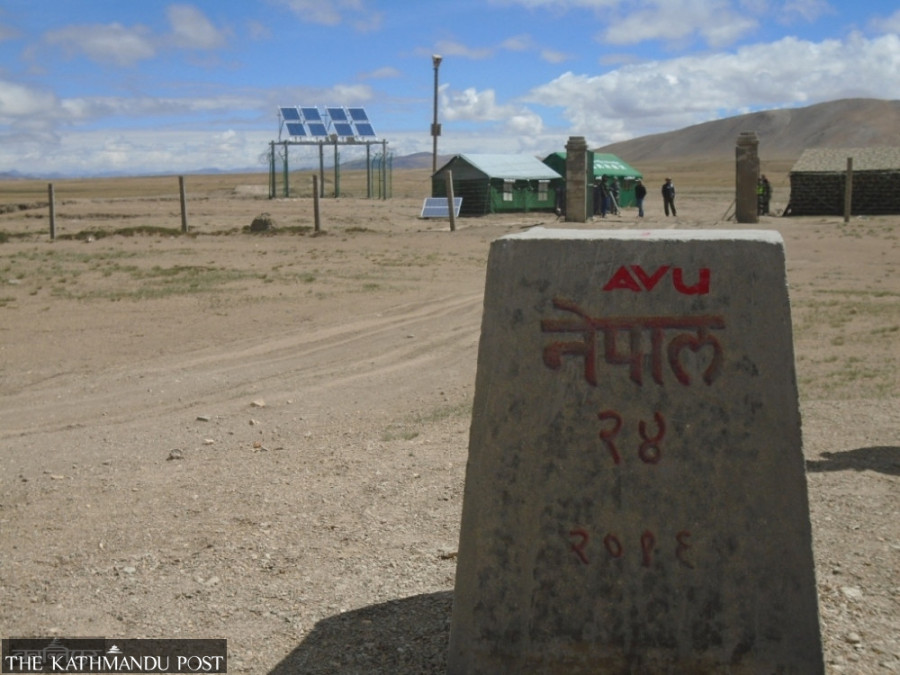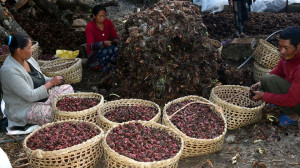Money
Beijing to reopen fourth border point with Nepal
The closure of the Chinese border in 2020 has affected a large number of Nepalis exporting goods such as handmade carpets and handicrafts to China.
Krishana Prasain
China has decided to reopen the Korala border point for both trade and travel movements from Monday onwards after a hiatus of four years since it was closed.
Nepal shares a 1,400-km long border with Tibet along the Himalayan range.
China allows trade and transit through six border points—Tatopani-Khasa, Rasuwa-Kerung, Yari (Humla)-Purang, Olangchung Gola-Riwu, Kimathanka-Riwu and Nechung (Mustang)-Lizi—for bilateral trade with Nepal.
Korala is the fourth border point that Beijing has reopened after the Rasuwa-Kerung, Tatopani-Khasa and Yari (Humla)-Purang, which had remained closed since 2020 after the Covid-19 pandemic struck.
“The Nechung (Mustang)-Lizi border is being opened in a full-fledged manner for the first time,” said Janak Raj Pant, the chief district officer of Mustang.
“We have already distributed passes to Nepalis willing to travel across the Chinese border.”
He, however, said that Nepalis could travel up to 30 km from the Korala onto the Chinese side.
A road connecting Jomsom and Korala has also been built.
Nepal and China welcomed the successful opening of the Lizi-Nechung port near the Tibet border during Prime Minister Pushpa Kamal Dahal’s visit to China in late September this year.
The port is situated across the border from Korala village in the Mustang district.
An inauguration programme is scheduled to be held at the Korala border by allowing goods-laden containers to enter Nepal on Monday, said Pant.
The closure of the Chinese border in early 2020 has affected a large number of Nepali entrepreneurs exporting goods like handmade carpets and handicrafts to China.
A trade fair used to be held at the Korala border point and was a vital source of income for Nepali traders living in the remote Himalayan region, said Pant.
Nepal has its customs, quarantine, immigration and police offices in Korala, about 8 km from the Tibet border.
The opening of the Chinese border has sent imports soaring from China.
According to the Department of Customs, Nepal imported goods worth Rs79.82 billion in the first three months of the current fiscal year from China, up 42.42 percent compared to the same period in the last fiscal year.
The exports, too, have increased. The customs data shows that exports to China jumped 345.9 percent to Rs732.36 million in the review period.
Nepal's trade deficit with China, however, remained at Rs79 billion in the review period.
China is Nepal’s second-largest trade partner after India. China provides zero-tariff treatment to about 8,000 products from Nepal under its duty-free market access scheme for least developed countries (LDCs).
“Reopening of more borders in the north is a good sign for Nepal’s trade,” said Chandra Ghimire, former secretary of the Ministry of Industry, Commerce and Supplies. “What’s worrying is China's unstable policy of opening and closing the borders unilaterally.”
According to the South Asia Watch on Trade, Economics and Environment (SAWTEE), Nepal’s trade relationship with China has been hit hard by a combination of natural disasters, the most significant one being the 2015 earthquake, and the Covid-19 pandemic.
The pandemic has led to significant disruptions on cross-border trade between the two nations.
According to a study conducted by SAWTEE on Nepal-China Trade, between 2020 and 2022, over 90 percent of the value of goods exported to China from Nepal were covered by the zero-duty list for the least developed countries (LDCs), but the utilisation of preferences averaged 68 percent.
In a roundtable SAWTEE held in Kathmandu on Thursday under the theme ‘Nepal-China Trade: Prospects and Challenges’, Rupesh Tha, research officer of SAWTEE, said although China stands as Nepal's second-largest trading partner, the trade balance has distinctly favoured China.
He said it is vital for Nepal to fully harness the advantages of zero-tariff treatment provided to over 8,000 products originating in Nepal and diversify its exports to China.
Current bilateral agreements, such as the Trade and Payment Agreement 1981, are outdated and ill-suited to the present circumstances and need to be reviewed, he said. “This is particularly pertinent as Nepal grapples with a significant trade deficit with China.”
In the same programme, Rabi Shanker Sainju, former joint secretary at the Ministry of Industry, Commerce and Supplies, said that Nepal's trade with China is adversely affected by high transportation costs resulting from its inadequate logistics infrastructure.
“With the evolution of the landscape of the Chinese consumer market, demand for high-quality products has increased, and this must be taken into account when looking to boost exports to China,” he added.
The specific challenges arising from the sanitary and phytosanitary (SPS) measures impacting Nepali products require prompt attention, as do the specific issues surrounding transportation, connectivity, and logistical aspects, in both exports and imports with China, experts said.
“Korala trade point will connect central Nepal with the Chinese markets. It will benefit Nepal in both investment and trade,” said Ghimire.
Ghimire added that Nepal and China need to sort out the issue of the rules of origin which has been creating hassles for Nepali products to enter the Chinese market.
In May this year, the Tatopani border point was re-opened for two-way cargo movements, eight years after the devastating earthquake of April 2015. In September this year, Beijing reopened the Tatopani-Khasa border point for people’s movement.




 5.62°C Kathmandu
5.62°C Kathmandu















